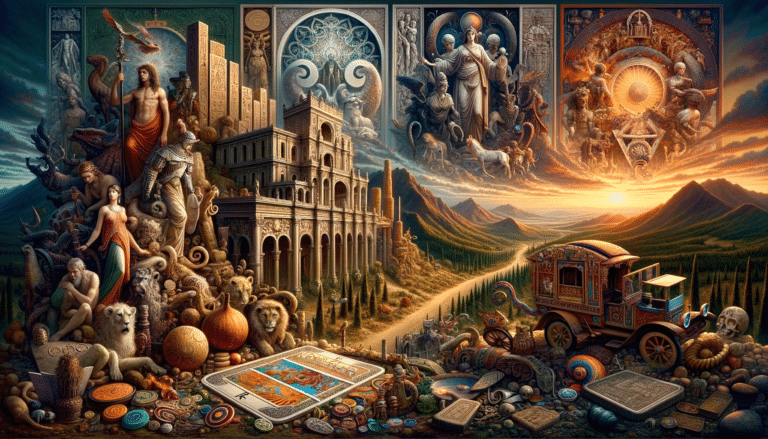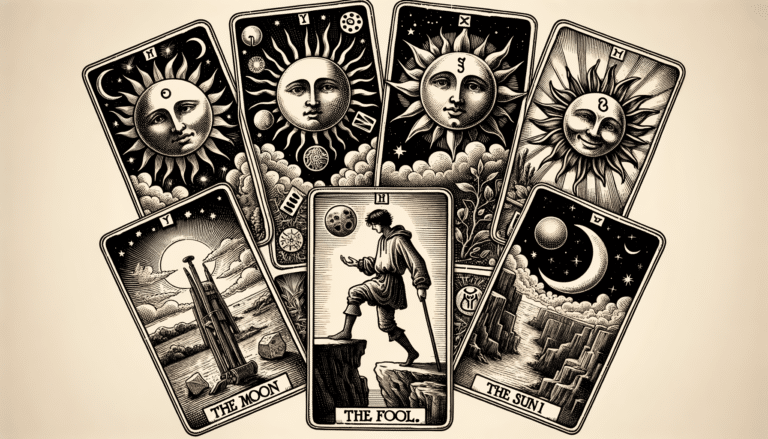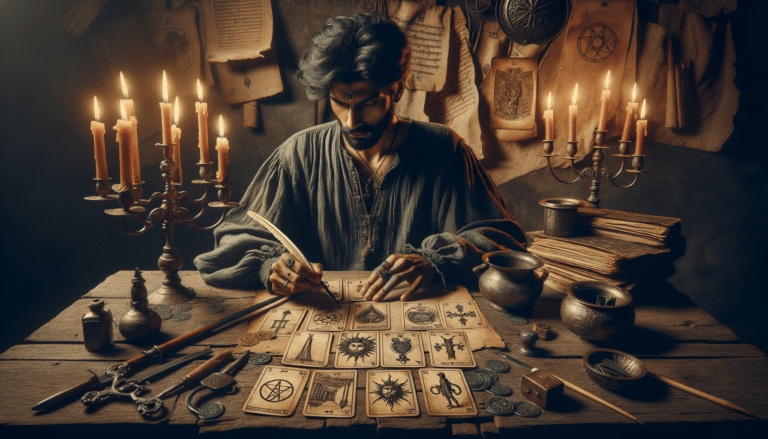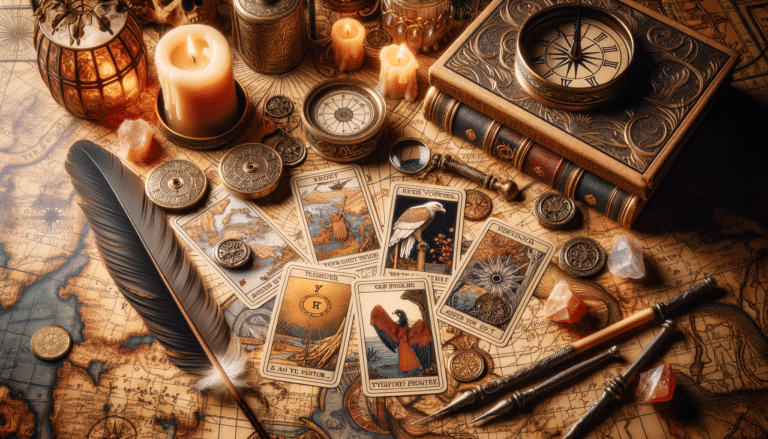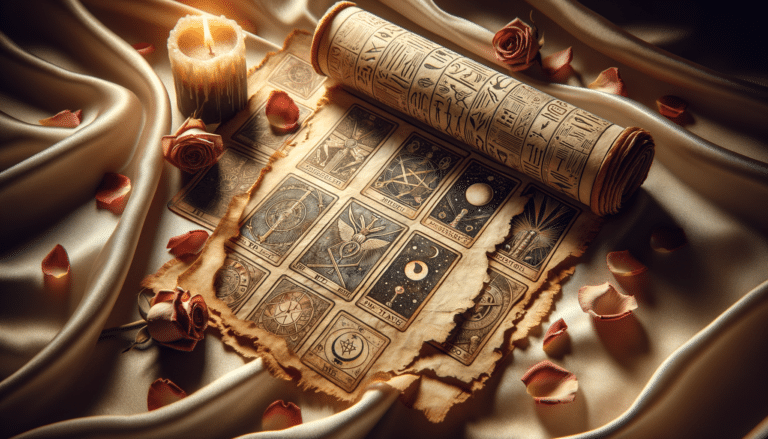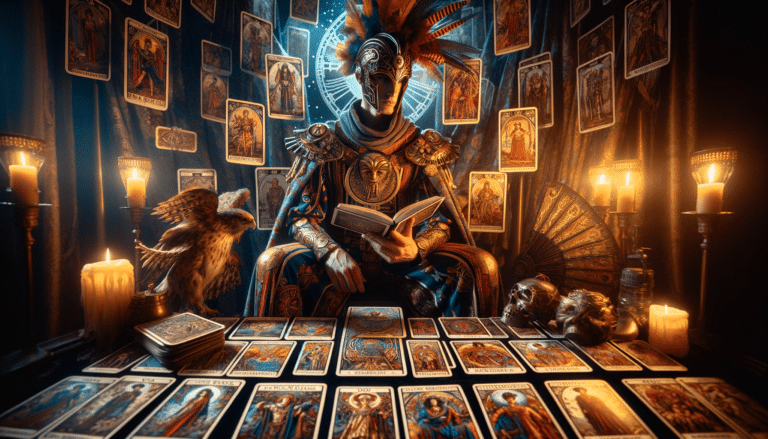Historical Development of Tarot Cards Explained
Tarot cards have been around since the dawn of time, or so it seems, shrouded in the mists of history and mystery. You’ve likely seen them, with their arcane symbols and evocative imagery, but you may not know why they’ve transformed so drastically over the centuries.
In this article, we’ll take a look at the historical development of tarot cards.
Originally, they served as mere playing cards in 15th-century Europe. However, you’ll find that their evolution was spurred by waves of mysticism sweeping across the continent, as well as the allure of the unknown. Artists and seers took hold of the tarot, injecting personal and cultural significance into the deck. As a result, the cards became a canvas for creative expression and a tool for divination.
You now witness a rich tapestry of designs and uses, each iteration reflecting the changing facets of society and the enduring human quest for meaning.
Key Takeaways
- Tarot cards originated as playing cards in the 15th century and were primarily used for games.
- The rise of mysticism and occult practices transformed tarot cards into tools of divination, offering insights into deeper truths.
- Tarot cards underwent significant artistic transformations over time, with artists infusing the imagery with esoteric meanings and allegories.
- Tarot cards have had a cultural and social impact, reflecting shifts in societal attitudes towards gender roles, spirituality, and authority.
Origins and Early Use

Your fascination with tarot cards likely begins with their inception, a convergence of art, symbolism, and gaming in the 15th century. Initially, these intriguing cards served purely playing purposes, akin to modern-day bridge or poker. Aristocrats and common folk alike delighted in the strategic gameplay, which was enhanced by the rich illustrations that adorned each card.
Card symbolism wasn’t deeply mystical from the start. The images on the tarot were primarily allegorical, representing social hierarchies and virtues of the time. You’d find characters like the Emperor or the Fool, each speaking to the medieval mindset and cultural norms. The four suits – swords, cups, wands, and pentacles – mirrored the classes of society, from nobility to clergy, and from merchants to peasants.
It’s the layers of meaning within these symbols that later captivated those seeking more esoteric knowledge. You see, as centuries passed, the role of tarot cards shifted. They transformed from a pastime into a tool for divination and self-reflection. But remember, their original use was far more prosaic – a testament to the human love for games and storytelling through visually compelling mediums.
Influence of Mysticism
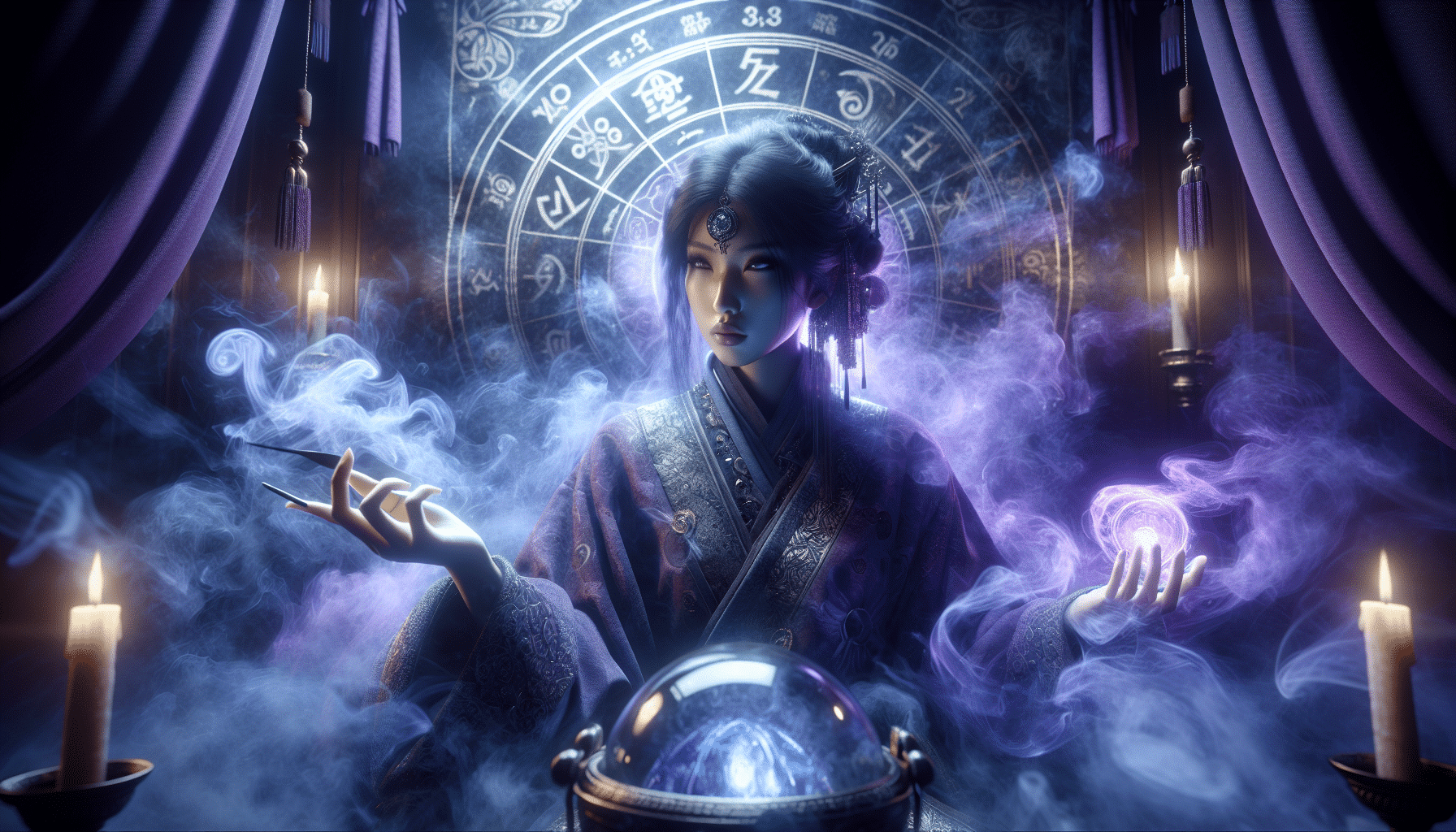
As you delve deeper into tarot’s history, you’ll discover that it was the rise of mysticism and occult practices that ultimately steered these cards from parlour games to the realm of the metaphysical. The occult resurgence in the 18th and 19th centuries breathed new life into tarot cards, transforming them into tools of divination and gateways to the unconscious.
Here’s a glimpse into the mystical aura that surrounded tarot cards:
- Candlelit rooms where seers peer into the future, the air thick with the scent of incense and the hushed whispers of spirits.
- Velvet-covered tables holding the spread of tarot cards, each image a key unlocking secrets of the cosmos, beckoning the seeker to explore deeper truths.
- The palpable energy of a seeker’s hand hovering over the deck, poised to pick a card that resonates with their soul’s journey.
These evocative scenarios illustrate how tarot became enmeshed with divination methods, offering a reflection of the seeker’s inner world and potential futures.
As you continue your quest for understanding, remember that tarot’s evolution is a testament to humanity’s enduring search for meaning beyond the tangible.
Check out our Tarot Cards here…
Artistic Transformations
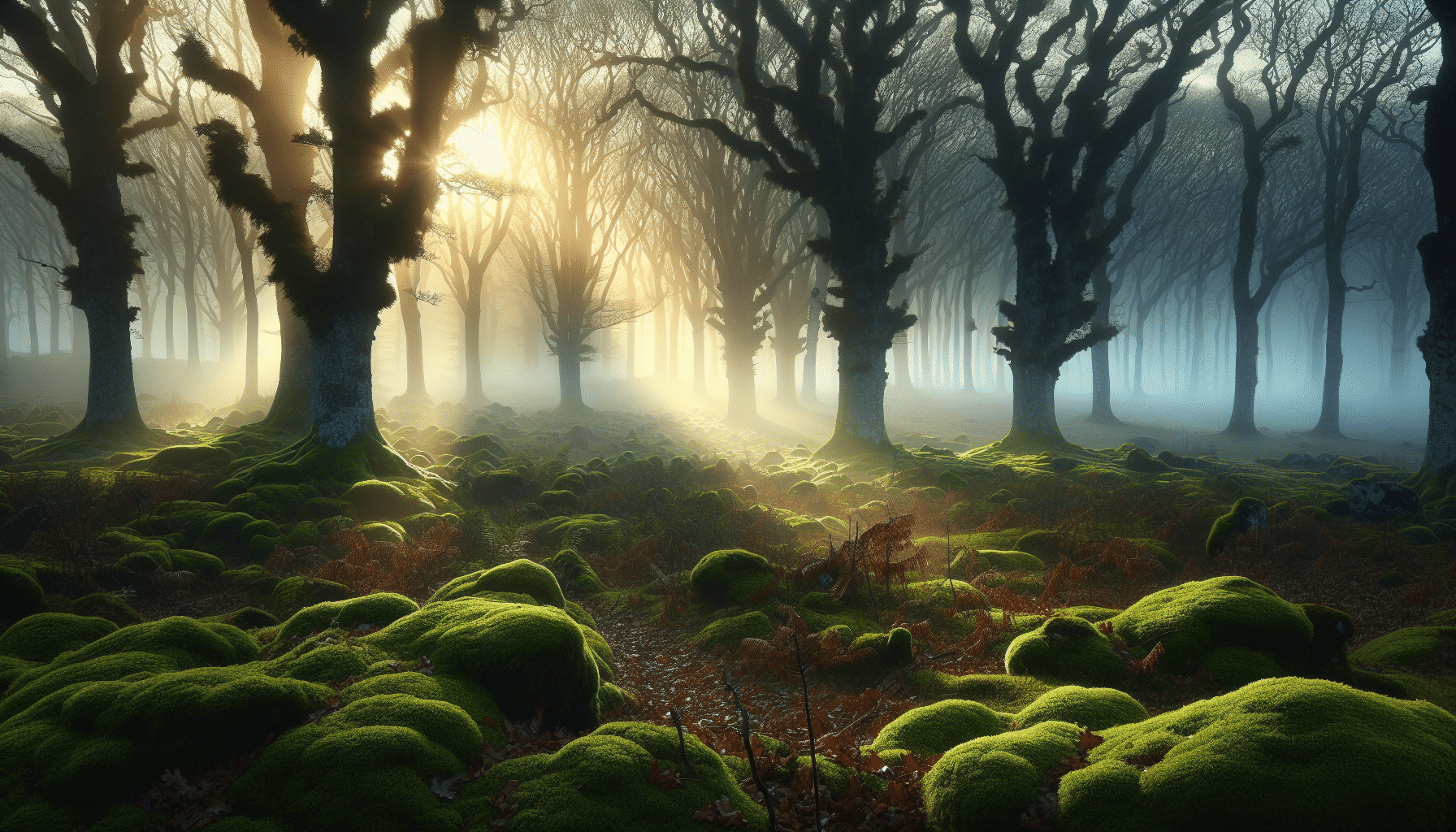
Beyond the mystical allure, you’ll find that tarot cards underwent significant artistic transformations, mirroring the cultural and philosophical shifts of their times. Initially, these cards were mere playing tools, decorated with rudimentary designs. However, as tarot’s popularity surged, so did the complexity and depth of deck symbolism. Artists began to infuse the imagery with esoteric meanings and allegories, turning each card into a tapestry of metaphysical concepts and narratives.
The journey of tarot is marked by creative reinterpretations that reflect the zeitgeist of their eras. For instance, the Italian Renaissance saw decks adorned with elaborate, classical art, exemplifying the period’s adoration for antiquity and humanism. Moving into the modern age, you’ll notice a bold deviation from traditional motifs. Contemporary artists often draw upon diverse inspirations such as current social issues, gender roles, and even pop culture, imbuing the cards with fresh perspectives and layers of meaning.
This evolution isn’t merely cosmetic. As the artistic style of tarot decks evolved, so did the interpretation of the symbolism contained within. You, as a reader or enthusiast, are witnessing a living history, where each card is a canvas that reflects the changing worldviews and artistic bravado of its time.
Learn more with these tarot books here…
Cultural and Social Impact

Historically, tarot cards often reflected the prevailing societal norms and cultural milestones, which you’ll find shaped their evolution significantly. As you delve into the world of tarot, you’ll notice that these cards weren’t just passive tools; they were active participants in the cultural and social dialogues of their times.
The cultural and social impact of tarot cards is vast and varied. You’ve got to consider the complex interplay between acceptance and skepticism, as well as the balance between mystical allure and practical use. Here’s what stands out:
-
Fortune telling stigma: Once a parlor game, tarot’s shift to fortune telling brought along a stigma, as rationalism and science began to eclipse older ways of understanding the world.
-
Religious opposition: Tarot cards faced pushback from religious institutions, which often viewed them as heretical or linked to the occult.
-
Societal norms: The imagery on the cards mirrored societal changes, including shifts in attitudes towards gender roles, spirituality, and authority.
You’re looking at a tool that has been vilified, celebrated, and deeply misunderstood. Tarot’s evolution isn’t just a tale of artistic changes; it’s a reflection of the human condition and its ongoing dance with the mysteries of life.
Learn even more secrets of history of tarot cards here…
Modern Adaptations and Uses
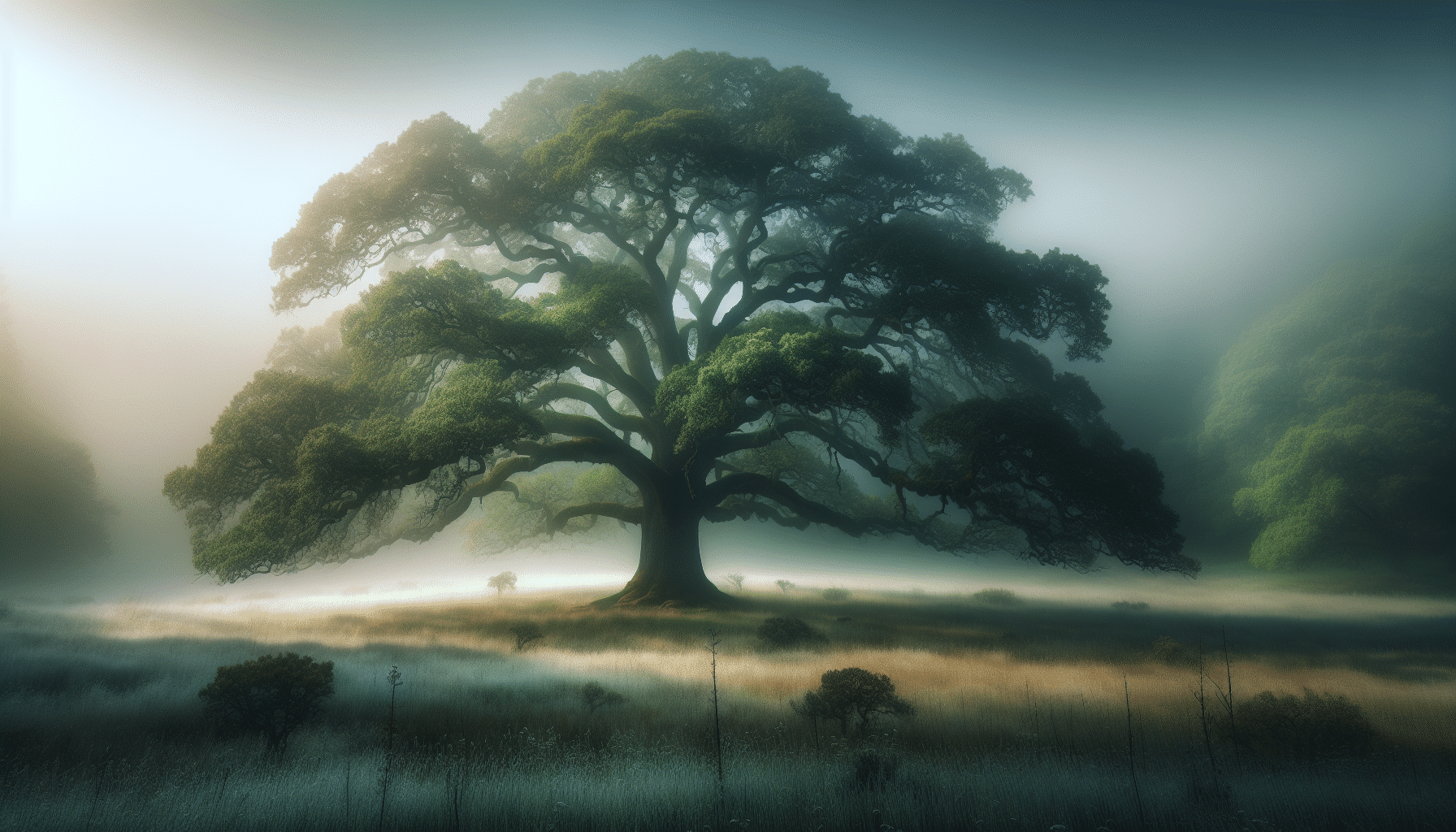
You’ll find that today’s tarot decks have evolved to encompass a diverse range of themes, from feminist perspectives to pop culture references, reflecting current societal values and interests. Deck personalization has become a significant trend, allowing you to choose imagery and symbols that resonate with your personal journey. This customization makes the reading experience more intimate and tailored to individual preferences.
Online readings have also surged in popularity, offering convenience and accessibility. You might be skeptical about the authenticity of these digital divinations, but many users report meaningful insights, similar to physical card sessions. This digital shift ensures that tarot readings can fit into even the busiest of schedules.
Here’s a quick overview of modern tarot:
| Aspect | Description |
|---|---|
| Deck Themes | Varies from traditional to niche interests like fantasy or gothic. |
| Personalization | Decks can be customized to reflect personal style or beliefs. |
| Online Accessibility | Readings are available through websites and apps, broadening reach. |
Conclusion
You’ve journeyed from the tarot’s humble beginnings to its mystical metamorphosis. Witnessed its art evolve, its impact on cultures, its dance with society.
Now, see it in your hands, a modern tool for introspection, a bridge between past and present. Cards shuffle, and so does history, blending ancient symbolism with contemporary quests for meaning.
In each card, a story; in every spread, your story. Tarot endures, adapting, yet timeless – yours to interpret, yours to define.
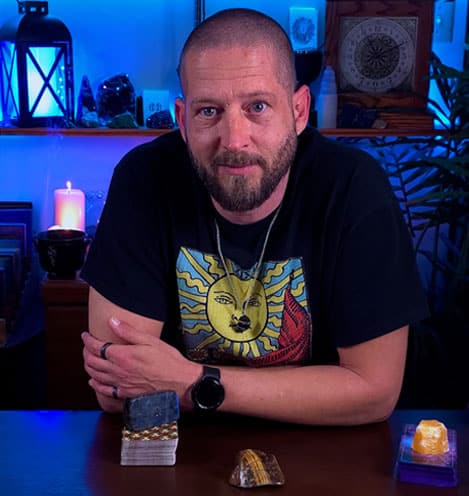
About The Author – Allen Hill
Allen Hill, the force behind Unknown Truth Tarot, has a YouTube following 6-times bigger than the population of his hometown, Miamisburg, Ohio. From his spiritually rich blog on Tarot and crystals to his role as CEO of The Unknown Truth Tarot Metaphysical Shop, Allen’s passion for the metaphysical shines through.
A master Tarot reader and “crystal junkie,” Allen is also a devoted dad to Dylan, 10, and Destiny, 24. When he’s not immersed in the world of Tarot and crystals, he enjoys poker and video gaming sessions, often humorously outplayed by Dylan.
Follow Allen on Twitter, Instagram, Facebook, TikTok, and subscribe to his Unknown Truth Tarot YouTube channel to join him on a journey of spiritual growth and self-discovery.

